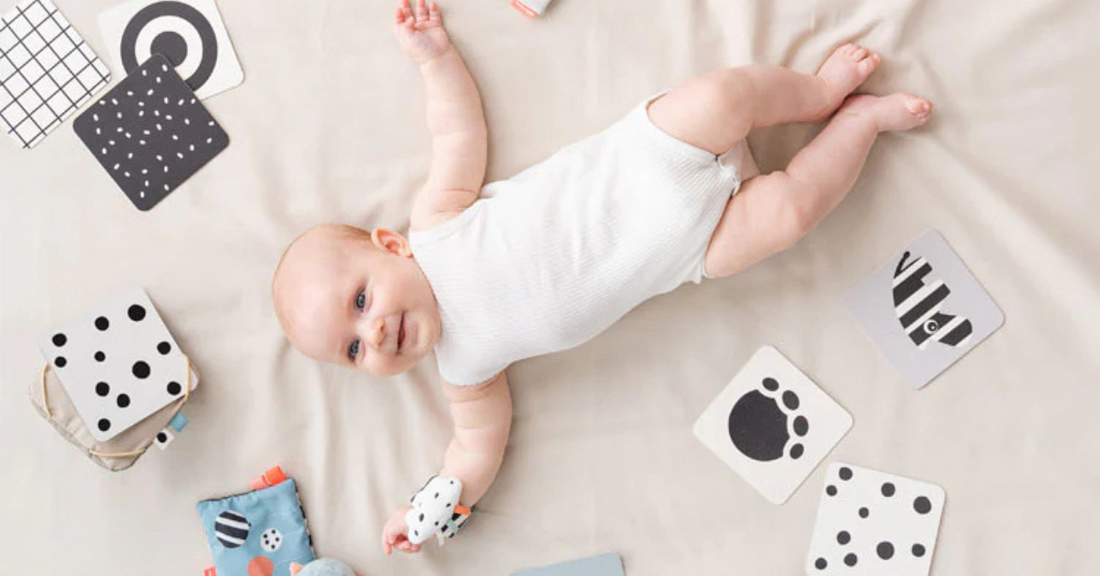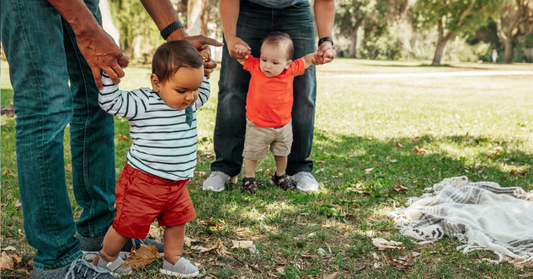What Are High Contrast Toys? Do Infants of Different Ages Have the Same Color Needs for Visual Development?

High-contrast toys (e.g., black-and-white patterns) effectively stimulate newborns’ vision, while brighter colors (like red, blue, and green) gradually engage older infants. The key is adapting contrast and color complexity to match the baby’s age, fostering both visual and cognitive growth."
— The article breaks down infants’ evolving color needs and empowers parents to make informed toy choices for sensory and brain development.
Many new parents find themselves wondering if the toys they choose can truly influence their baby’s vision and overall development. It might feel overwhelming to sort through the endless toy options on the market, especially when there is so much at stake in nurturing a baby’s cognitive and sensory growth. Fortunately, understanding what high contrast toys are—and why they matter—can help parents make the best possible choices to support their little one’s visual development right from the start. This article seeks to offer clarity on this sometimes-confusing topic.
High contrast toys are objects featuring bold, contrasting patterns (most commonly in black and white) specifically designed to stimulate infants’ visual development. While newborns tend to benefit most from simple black-and-white patterns, older infants gradually respond to brighter and more diverse colors. The key is matching the toy’s color intensity and contrast level to each stage of a baby’s vision growth.
While we now have a quick answer about what high contrast toys are—and why different ages benefit from different color schemes—there’s more to discover about how these toys support visual maturity. Let’s explore the key questions many parents have so we can fully understand the science behind infant color perception and make informed choices about play.
Why Do Newborn Babies Prefer Black-and-White Toys?
New moms and dads often question why black-and-white toys are recommended for newborns. The confusion can lead to doubts about whether colorful items might be better for early playtime. However, unveiling the true reason behind newborns’ preference for strong contrasts can melt away those doubts and replace them with confidence.
Newborns are naturally drawn to bold, contrasting visuals because their eyes are still developing, and high-contrast patterns are the easiest for them to perceive and focus on.
In a newborn’s first few weeks of life, their retina and the photoreceptors within the eye are not yet fully mature. This means that subtle differences in hue or brightness are less discernible. Black-and-white toys stand out dramatically, enabling infants to engage their developing visual pathways more effectively. By focusing on these objects, newborns “exercise” their vision, much like we strengthen muscles through physical exercise. Over time, this visual stimulation helps refine the baby’s focus and tracking abilities, contributing to smoother eye coordination and overall visual acuity.
How Do High Contrast Toys Help With Infant Brain Development?
Parents might assume that visual stimulation is purely about the eyes, yet a lack of clarity on the broader neurological impact may cause them to undervalue or even skip high contrast toys. Recognizing how these toys engage not only the eyes but also the brain can transform that uncertainty into motivation to introduce high contrast play elements.
High contrast toys encourage neural connections related to sight, cognitive processing, and even early problem-solving by prompting the visual cortex to process stark color differences.
Research underscores that the newborn brain is constantly forging new neural pathways, and sensory input is critical for this growth. When a baby fixates on a black-and-white pattern, it sparks activity in the visual cortex, forming stronger connections and solidifying foundational skills. These developmental benefits aren’t limited to the domain of sight; they also contribute to higher-level cognitive functions down the line. In other words, the significant contrast found in black-and-white images helps the infant’s brain “practice” interpreting shapes and boundaries, a key building block for spatial awareness, pattern recognition, and even preliminary problem-solving skills.
What Colors Are Most Appealing to Babies at 3–6 Months?
Around the three-month mark, parents may wonder if they should pivot from black-and-white to more colorful toys. Uncertainty can arise, as many baby products now flaunt lots of bright hues. Knowing when and how to incorporate different colors can replace that worry with clear direction.
Between 3 and 6 months, babies begin to perceive a wider color spectrum and may show fascination with bright reds, blues, greens, and yellows, especially when combined with bold patterns.
As an infant’s color detection advances, brighter tones sometimes become more intriguing than plain black-and-white. Parents can start introducing toys with splashes of vivid colors—like a red-and-black rattle or a brightly patterned teething ring—to further enrich a child’s visual world. This gradual shift doesn’t mean abandoning contrast: patterns that blend bright hues with dark backgrounds maintain the strong distinctions that are still beneficial for developing eyes. This period is also a wonderful time to experiment with visually engaging playmats or activity blankets, as they offer a variety of shapes, textures, and colors to discover.
When Should Parents Introduce Colors Beyond Black and White?
By the time the little one grows beyond the newborn stage, parents may suspect it’s time for more varied color play. Yet hesitation or confusion may linger if it’s not clear whether bolder palettes will overwhelm the baby’s visual system. Understanding how color recognition blossoms can transform that uncertainty into purposeful action.
Babies can generally start enjoying a full rainbow of colors around 4–6 months, but maintaining strong contrast and simple patterns remains beneficial for visual focus.
Once a baby’s eyesight sharpens and they can distinguish a greater range of hues, families can expand toys beyond the standard black-and-white. However, it’s still important to combine bold contrasts with these new colors. For instance, a toy that features large outlines or distinct color blocks (such as high-contrast stripes or patterned blocks) can deliver the best of both worlds: vibrant color and definable shapes. This blend aids babies in refining their visual tracking, depth perception, and color discrimination while continuing to strengthen the brain’s developing networks.
Conclusion
High contrast toys, especially those featuring black-and-white patterns, serve as exceptional visual stimulants for newborns and younger infants. As babies mature, their color vision expands to appreciate brighter, more diverse hues. By staying in tune with these evolving color preferences and combining bold contrasts with a wider color palette, parents can support optimal visual and cognitive development. Ultimately, selecting playthings that align with each stage of growth empowers families to nurture their child’s vision and overall well-being with confidence.







0 comments